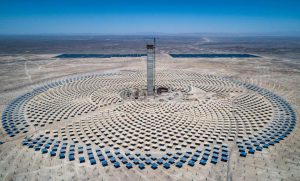After successfully completing its registration in the Verified Carbon Standard (VCS) program, the Cerro Dominador solar thermal power plant will be able to market carbon credits at the end of 2020, the estimated date of its launch, to continue contributing to the achievement of the Sustainable Development Goals ( SDGs) established by the United Nations.

Carbon credits are an alternative for companies without the ability to reduce their greenhouse gas (GHG) emissions, and who are interested in reducing or neutralizing their carbon footprint. The bonds issued by Cerro Dominador will be subject to rigorous internationally recognized standards and will be certified by the VERRA company.
Fernando González, CEO of Cerro Dominador, stressed that “with this new milestone, we continue to contribute to sustainable development and provide the industrial and energy sector with value options in the face of climate change, which is part of the purpose of Cerro Dominador. The option of offsetting emissions through certified carbon credits is a tremendous alternative to the country. ”
For its part, South Pole commented through Christian Ehrat, Director of Renewable Energies and Sustainable Technologies for America, that the company “is proud to have accompanied Cerro Dominador throughout this rigorous registration process of the first large-scale solar project scale of Chile under the Voluntary Carbon Standard (VERRA). Our developments have spanned over 700 projects worldwide and extends to every stage of the carbon credit life cycle. We are very pleased to apply this experience in our collaboration with Cerro Dominador and we will continue to do so for future projects that contribute to reducing emissions in the country. ”
Cerro Dominador, which in may completed the milestone of fusion of 46,000 tons of thermal salts, is a pioneering project carried out by Acciona and Abengoa, which will consist of a 100 MW photovoltaic plant and the first solar thermal plant with concentrated solar power technology (CSP) in Latin America, with 110 MW of capacity and 17.5 hours of thermal storage.